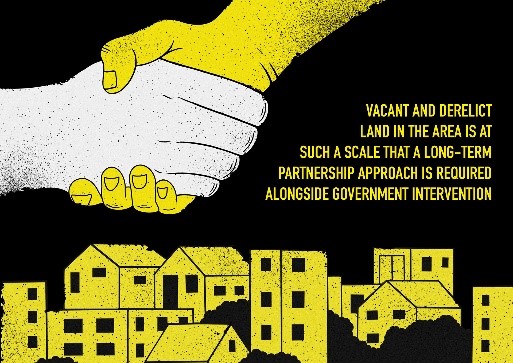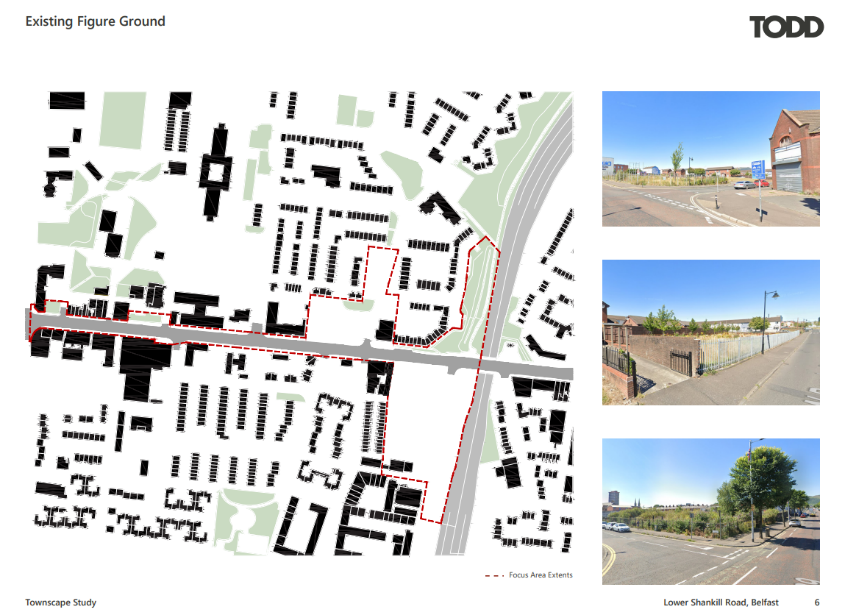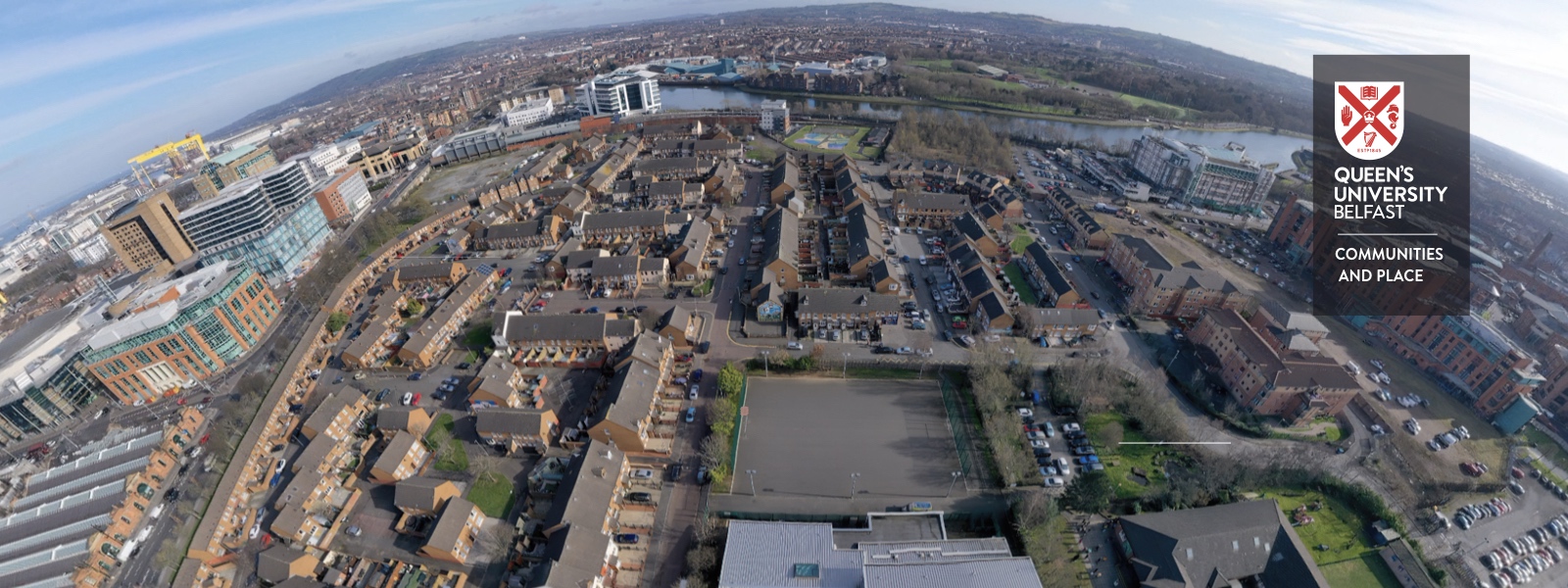BUILD and Lower Shankill Townscape Analysis
During 2023, QCAP has continued to explore ways to provide relevant research or technical support to advance the objectives of the BUILD Shankill project.

The aim was also to progress the initial work that was completed previously by QCAP in relation to a better understanding of the local housing market and the 59 vacant sites that were identified across the Greater Shankill area.

To achieve this, QCAP worked with the Queen’s University Belfast Public Engagement team to raise a small and flexible fund that could assist BUILD to procure external architectural assistance and expertise. This technical support would work to help BUILD and its members to ‘re-imagine’ what might be possible but also feasible in terms of physical regeneration across the vacant sites, particularly on those nested in the Lower Shankill area. Clare Mulholland from Architecture and the School of Natural and Built Environment was integral to coordinating the creation of the fund but also in developing the terms of reference for the design brief.
The Lower Shankill was identified in previous QCAP research as being heavily impacted by deprivation and disinvestment but also an area that has the potential to become strategically relevant given the advancement of other large scale physical regeneration projects such as the Ulster University Campus, the Belfast Stories Project as well as the new transport hub at Weavers Cross. Working in the context of this design brief, TODD Architects were subsequently appointed to complete a place-based townscape analysis and presented a visual demonstration of their findings over a series of 3 workshops with BUILD members in Spring 2023.

The scope of TODD’s townscape analysis was wide ranging and has offered BUILD a range of innovative design proposals to address issues set out in the brief, specifically around blight, vacancy, and physical dereliction. This included the construction of new urban elements which could provide a more coherent gateway or a better sense of arrival to the area by drawing on the area’s unique heritage and past. It also explored alternative possibilities around potential housing typologies and how these might be integrated into emerging or existing land-uses that could support economic development. Finally, it also offered some creative proposals on improving connectivity across and beyond the Lower Shankill via investment into high quality public realm, new environmental improvements, and the potential development for satellite community transport hubs.


The workshops and design proposals by TODD were welcomed by members of the BUILD group who now possess some tangible place-shaping proposals as well as a broader vision in terms of what might be possible for the future regeneration of the area. Moving forward, this design work will form part of a suite of feasibility work that will be used to strengthen wider engagement with relevant statutory agencies like the Northern Ireland Housing Executive and support their long-term aim of individual site release and enacting physical regeneration across the Greater Shankill area.

